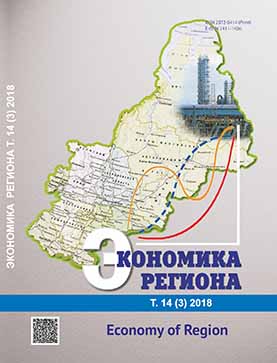Foreign Trade and Regional Inequality: The Case of the Russian Federation.
Foreign Trade and Regional Inequality: The Case of the Russian Federation.
Author(s): Kazuhiro Kumo, Aleksandra Gennadyevna Koval, Irina Aleksandrovna Korgun, Olga Yuryevna TrofimenkoSubject(s): Economy
Published by: Институт экономики Уральского отделения Российской академии наук
Keywords: poverty;inequality;foreign trade;trade openness;regional economy;gross regional product;income distribution;Russia;economic transformation;economic development
Summary/Abstract: An impact of foreign trade on national inequality levels is one of the most discussed topics both by public, politicians and academics. This paper contributes to this discussion by focusing on the role of foreign trade in the Russian Federation during its rapid economic transformation in 1990–2010. During this period, the trade-led growth model has helped to raise country-average levels of income. But simultaneously, it seemingly triggered greater inequality in income appropriation between different social groups. Looking into causality between foreign trade and this observed income disparity from the regional perspective will help us to understand the poverty problem associated with income inequality better and enhance the effectiveness of policies of the Russian government targeting income re-distribution. In particular, this research aims to answer a question whether during 1990’s–2000’s increasing openness to foreign trade was pro-poor on the regional level or not. Another point of interest is whether the distributional impact of growing foreign trade on incomes in Russian regions had been positive or negative. Several hypotheses for the Russian Federation are tested in the paper. First, higher openness to foreign trade improved income distribution in the Russian regions. Second, globalization of regions as a result of a more active foreign trade benefited individuals in the middle-income decile. This follows an idea that trade liberalization cuts living costs and raises living standards. Third, regions with larger rural population will tend to have more uneven income distribution. This follows from the neo-classical assumption that in rural areas a poverty burden tends to be larger. Active involvement in the trade of agricultural products might improve income distribution in such regions. Additionally, the share of dependent population among households must affect poverty headcount or the depth of poverty as previous studies on poverty determinants naturally suggested.
Journal: Экономика региона
- Issue Year: 14/2018
- Issue No: 3
- Page Range: 884-895
- Page Count: 12
- Language: English

